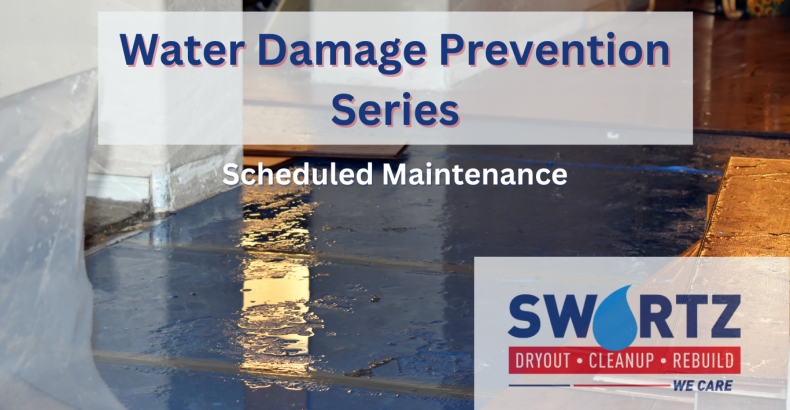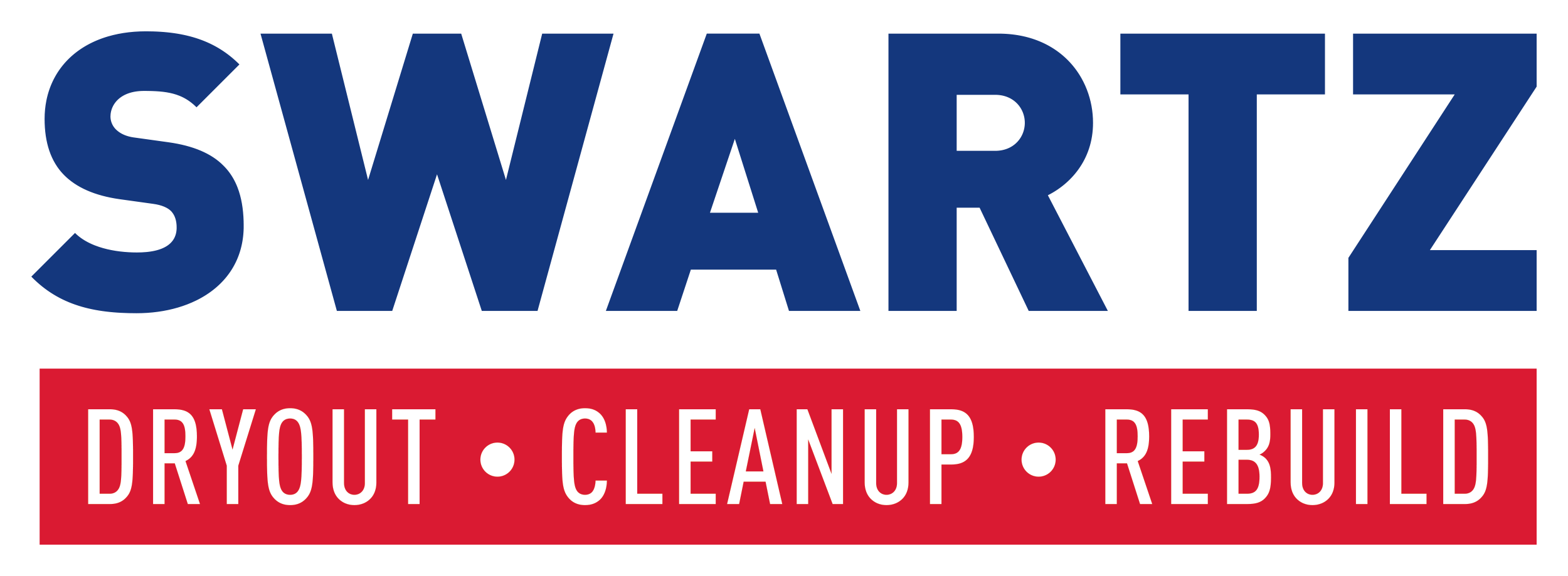
Water Damage Prevention: Maintenance Routine
No one wants to experience water damage in their home or their business.
It’s not a fun experience, and it can be costly.
So, what are some Water Damage Prevention tips to help avoid experiencing a water damage emergency?
Our Water Damage Prevention Series will cover three different areas over the next few weeks:
- Schedule Routine Maintenance: Inspect different parts of your home to stay ahead of water damage.
- Landscape for Outside Prevention: Ensure that water Slopes Away from the home and Drainage is clear.
- Get Smart about Water Damage Prevention: Utilize technology to lessen the impact of water damage.
Cause of Water Damage
Water Damage can be caused by a variety of different things.
- Sometimes it’s an appliance that malfunctions.
- Sometimes it’s a power outage.
- Sometimes it’s outside water getting inside the home.
- Sometimes it’s a person who doesn’t shut off the water before it overflows the cup, the sink, the bathtub, etc.
To prevent water damage from happening to your home, why not schedule some quick maintenance reminders to help you stay ahead of and aware of issues that lead to water damage when not addressed?
At least to prevent it from happening as best you can!
What should you look for?
Plumbing
When it comes to plumbing, this involves anything related to water coming in and water going out.
Depending on the age of your home (and how many times it has been remodeled), you may be looking for PVC pipes, copper lines, PEX tubing, steel pipes, cast iron pipes, or lead pipes.
I know! That’s a huge variety. But most homes only have a few types.
As you inspect the water coming into your home, you are going to ask yourself these questions:
- Do you see any water droplets?
- Do you see any cracks?
- Do you see anything wearing out?
Ideally, you don’t see any of those, which means you are good until the next inspection.
As you inspect the water going out of your home, you are going to ask yourself those same questions:
- Do you see any water droplets?
- Do you see any cracks?
- Do you see anything wearing out?
If you do see any of these things, then you inspect further to determine what needs repaired so that it doesn’t turn into a water damage situation.
HVAC
Your HVAC system stands for all things Heating, Ventilation, and Air Conditioning.
Basically, the heating and cooling elements of moderating the temperature in your home.
It’s wise to inspect this at least twice a year when the weather determines it’s necessary to switch from one to the other.
In the spring, as the weather warms, you switch from heating your home to cooling your home.
Likewise, in the fall, when the temperatures drop, you switch from cooling your home to heating your home.
If you are unsure what you’re looking for, call a professional to help you.
They’re trained to do this everyday, and they know how to safely inspect and repair your unit.
What do you look for?
Because we are focusing on water damage prevention, you are looking for the drain from your HVAC system.
High efficiency gas furnaces, including propane furnaces, create water vapor as it burns and heats your home.
That water vapor is collected and drained out of the system.
It usually has a pump that takes it to your sump pump or another drain that gets the water away from your home.
The air conditioner also creates moisture as the warm air in your home is blown over the evaporator coil.
Condensation (water droplets) build up and drip away, needing to be collected and moved away from the unit.
Likewise, the water is connected to a drain that removes it from your home.
If your furnace and air conditioning unit are contained within the same shell, there may be only one drain.
You will ask those same three questions as before:
- Do you see any water droplets?
- Do you see any cracks?
- Do you see anything wearing out?
If you don’t see anything, you are good until the next inspection.
If you do, inspect further to determine what needs repaired so that you can prevent water damage from occurring.
Roof
Let’s move outside the home for these last two locations of our routine maintenance.
The roof is the part of your home that takes the most strain from the elements.
- It sheds water when it rains.
- It soaks up the heat in the middle of the summer.
- It shields your home from frost in the winter.
- It holds on for dear life with high winds.
It takes a lot to withstand the elements, and eventually, every roof wears out.
So what should you look for during a quick roof inspection?
- Missing shingles or panels –
Sometimes high winds blow shingles off the roof.
If a shingle is missing, water may not run off the roof properly, and it may run into your home instead. - Raised or unsealed spots –
A finished roof is sealed to prevent water from leaking into it.
If you notice any spots that are raised or unsealed, there’s a possibility water could get in and damage your home. - Soft spots –
If you are able to walk on your roof for the inspection, pay attention to any spots that seem extra soft.
It’s often a sign that water has damaged the sheeting beneath the shingles, and will need replaced.
Yet it also can be an indication that water is getting in somewhere nearby, and that must be repaired to prevent further water damage.
Gutters
While you’re on the roof, do a quick inspection of the gutters.
Gutters are designed to catch rain water and move it to the downspouts, which then move the water away from your foundation.
What should you look for with the gutters?
- Leaves
- Shingle dust
- Tree debris
When leaves, shingle dust, and tree debris pile up in the gutters, the water doesn’t flow away properly.
When gutters fill up with water instead of draining the water away, there’s a risk that the extra weight of the water will pull the gutters away from the roof line of the home.
That exposes the fascia board behind the gutters, and when exposed long enough to the elements, will rot away from water damage.
If you see debris in the gutters, clean it out so they function properly.
When should you schedule your maintenance?
To maximize your time and your efforts and to ensure you uphold the value of your home as well, we recommend doing these checks quarterly.
Think of it as the change in the seasons. When the season changes, do a quick inspection of your home as your water damage prevention maintenance routine.
Yet schedule it in your Google calendar to help you remember when it’s time again.
If you’re like us, our brains don’t have the capacity to hold in a maintenance reminder every three months.
Schedule it so you can forget about it until the reminder reminds you it’s time.
If you experience water damage in your home or business, please give us a call immediately.
We have a 24-hour hotline at 419-331-1024.
We are the experts who will help you Dryout, Cleanup and Rebuild after water damage.
